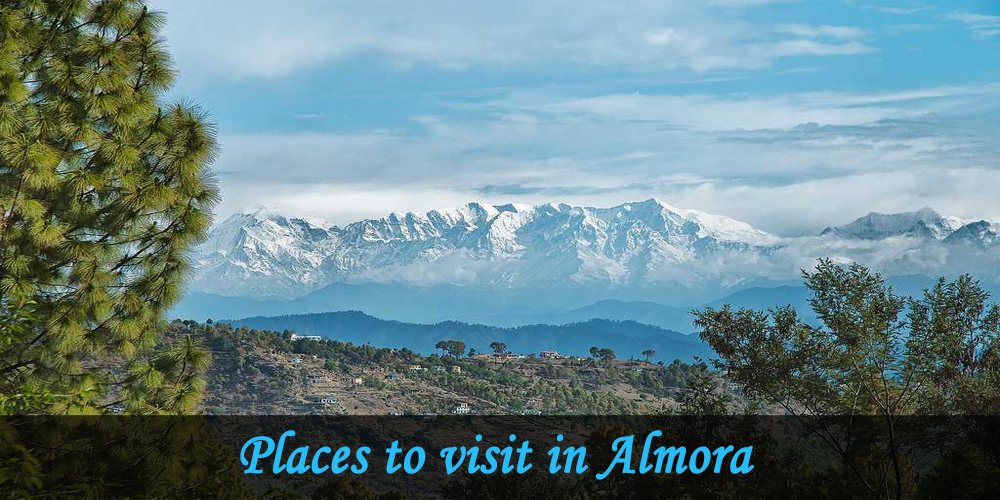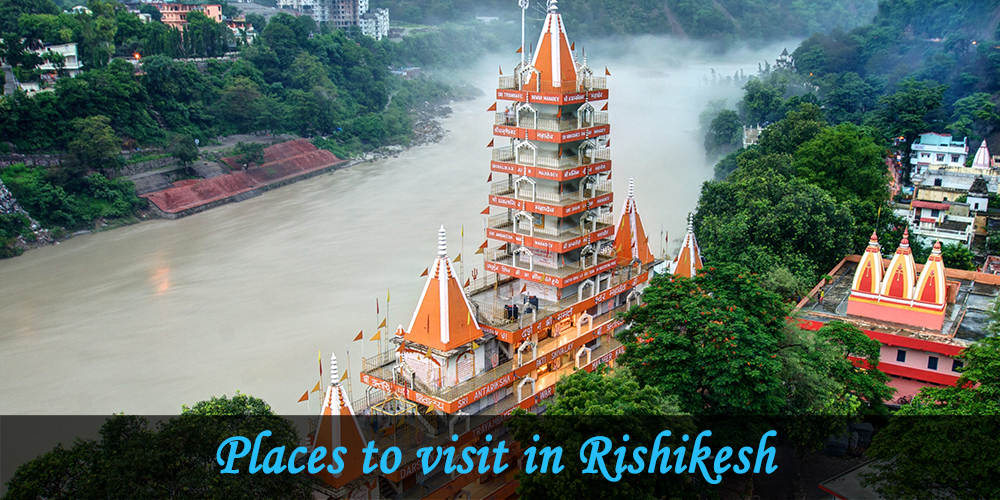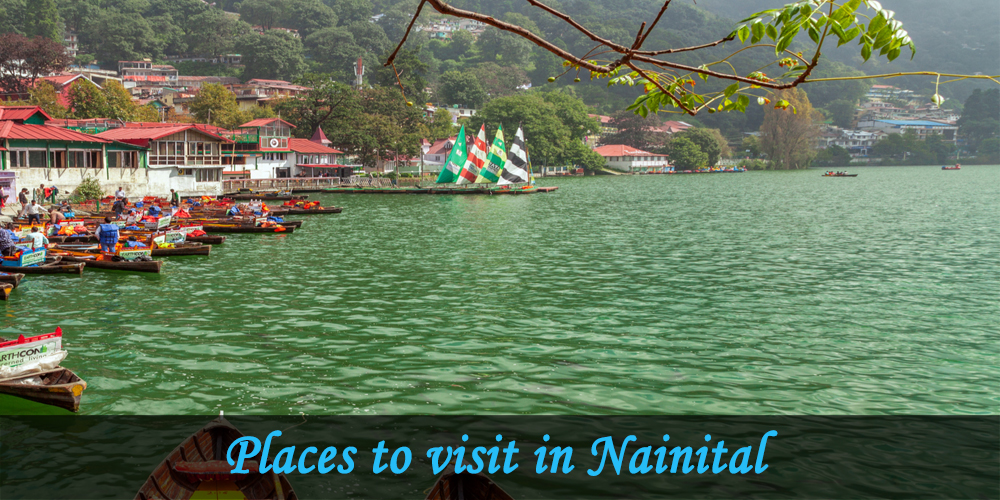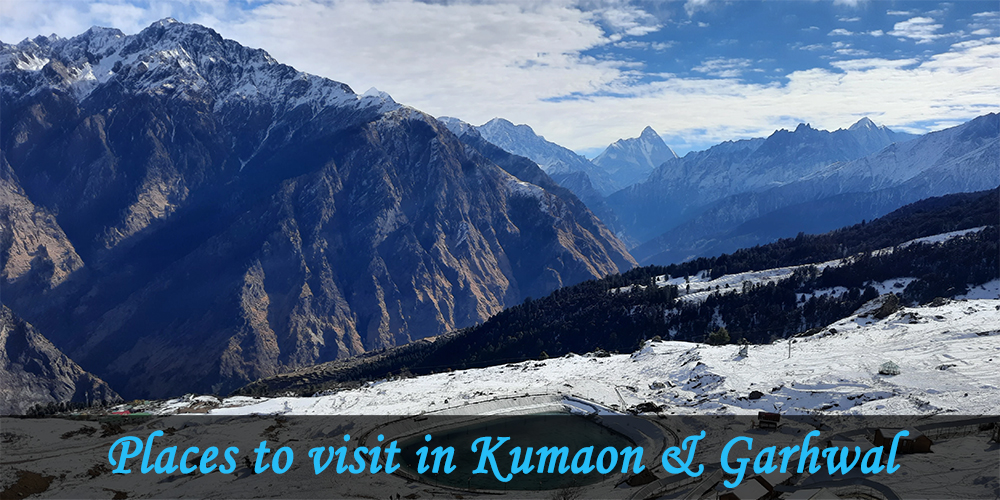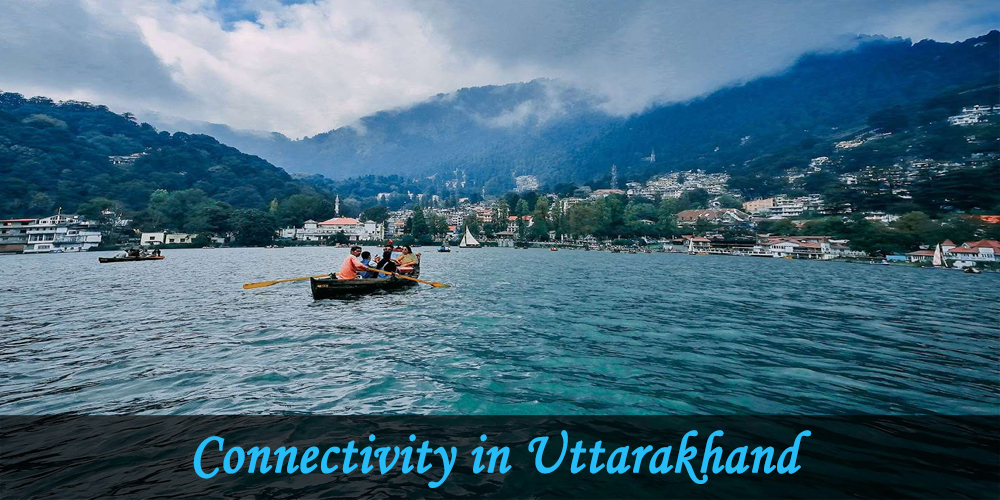Exploring Uttarakhand: Kumaon or Garhwal – Which is Better for Tourism?
Introduction: Uttarakhand, known as the “Land of the Gods,” is a popular tourist destination in India, offering a myriad of attractions ranging from majestic peaks and serene lakes to ancient temples and vibrant cultural experiences. The state is divided into two distinct regions: Kumaon and Garhwal. Each region boasts its own unique charm and attractions, making it challenging to determine which is better for tourism. In this article, we will embark on a journey to explore the tourist offerings of Kumaon and Garhwal, delving into their natural beauty, cultural heritage, adventure opportunities, and overall appeal, to help you make an informed decision on which region to explore during your visit to Uttarakhand.
Natural Beauty: Both Kumaon and Garhwal are blessed with breathtaking natural beauty that showcases the grandeur of the Himalayas. Kumaon, located in the eastern part of Uttarakhand, boasts picturesque hill stations like Nainital, Almora, and Mukteshwar. The region offers stunning views of snow-capped peaks, pristine lakes, and lush valleys. Garhwal, on the other hand, is home to popular destinations such as Mussoorie, Rishikesh, and Auli. It offers panoramic views of the Himalayan ranges, gushing rivers, and enchanting meadows. Whether you prefer the tranquil lakes of Kumaon or the dramatic landscapes of Garhwal, both regions offer a feast for the eyes and ample opportunities for nature lovers and photographers.
Cultural Heritage: Kumaon and Garhwal have rich cultural legacies steeped in history and mythology. Kumaon showcases a distinct culture influenced by the Katyuri and Chand dynasties. The region is known for its vibrant festivals like Bhitauli, Harela, and Khatarua, where locals celebrate their traditions through music, dance, and colorful rituals. Garhwal, on the other hand, is deeply rooted in Garhwali culture, which is reflected in its folk music, dance forms like BaradaNati and Chholiya, and the famous Garhwali hospitality. The region is also home to renowned temples like Badrinath, Kedarnath, and Gangotri, which attract millions of pilgrims every year. Both Kumaon and Garhwal offer a glimpse into the rich cultural heritage of Uttarakhand, providing visitors with an opportunity to immerse themselves in the local traditions and customs.
Adventure Opportunities: For adventure enthusiasts, both Kumaon and Garhwal offer a wide range of thrilling activities. Kumaon is known for its scenic trekking trails like the Pindari Glacier trek, the Milam Glacier trek, and the Nanda Devi Base Camp trek. The region also offers opportunities for wildlife enthusiasts with Jim Corbett National Park, known for its diverse flora and fauna. Garhwal, on the other hand, is renowned for its challenging treks like the Valley of Flowers trek, the Roopkund trek, and the Kuari Pass trek. It is also the gateway to adventure sports like river rafting in Rishikesh, skiing in Auli, and rock climbing in the Garhwal Himalayas. Whether you seek a peaceful trek amidst the serenity of Kumaon or an adrenaline-pumping adventure in Garhwal, both regions cater to the adventurous spirit of travelers.
Accessibility and Infrastructure: When considering tourism, accessibility and infrastructure play a crucial role. Kumaon and Garhwal have well-developed road networks, making them easily accessible from major cities and towns. However, Garhwal has a slight advantage in terms of air connectivity, with Jolly Grant Airport in Dehradun serving as a gateway to the region. Both regions offer a range of accommodation options, from luxury resorts to budget guesthouses, ensuring that visitors can find suitable places to stay. Additionally, popular tourist destinations in both Kumaon and Garhwal are well-equipped with restaurants, markets, and basic amenities to cater to the needs of travelers.
Best time to visit Kumaon.
The best time to visit Kumaon, a region in Uttarakhand, depends on the preferences of the traveller and the activities they wish to engage in. Kumaon experiences distinct seasons, each offering a unique charm and opportunities for exploration. Here’s a breakdown of the seasons and the best time to visit Kumaon based on different factors:
Summer (April to June): Summer in Kumaon is pleasant and provides respite from the scorching heat in other parts of India. The temperatures range from mild to moderately warm, with average highs reaching around 30°C (86°F). This season is ideal for nature lovers, adventure enthusiasts, and those looking to escape the heat. The higher altitudes, such as Nainital and Ranikhet, offer a cool and refreshing ambiance. It is a great time for outdoor activities like trekking, camping, wildlife spotting, and exploring the picturesque hill stations of Kumaon.
Monsoon (July to September): The monsoon season in Kumaon brings moderate to heavy rainfall, transforming the region into a lush green paradise. While the rain showers can limit outdoor activities, this season offers a unique opportunity to witness the beauty of cascading waterfalls, blooming flora, and mist-covered landscapes. The rain-washed mountains and the serene ambiance make it an ideal time for rejuvenation and enjoying the tranquillity of Kumaon. However, it’s important to note that heavy rainfall may lead to landslides and road closures in some areas, so it’s advisable to check the weather conditions and road accessibility before planning a trip during the monsoon.
Autumn (October to November): Autumn is considered one of the best times to visit Kumaon. The weather is pleasant with clear skies and mild temperatures, ranging from 15°C to 25°C (59°F to 77°F). This season offers breath-taking views of the Himalayan peaks, and the lush greenery combined with the vibrant hues of autumn foliage create a captivating visual treat. It is a great time for sightseeing, exploring local culture and traditions, and enjoying outdoor activities like hiking and birdwatching.
Winter (December to February): Winter in Kumaon is a magical time, especially for those who enjoy cold weather and snowfall. The temperatures can drop significantly, with daytime temperatures ranging from 5°C to 15°C (41°F to 59°F), and night temperatures dropping even further. The region experiences heavy snowfall in higher altitudes, such as Mukteshwar, Almora, and Nainital, transforming them into winter wonderlands. This season is perfect for snow lovers, skiing enthusiasts, and those seeking a cozy retreat amidst the snow-capped mountains. The crisp air, clear views of the snow-clad peaks, and the opportunity to indulge in winter sports make it a popular time for tourists.
The best time to visit Kumaon depends on personal preferences, whether it’s enjoying pleasant weather, witnessing the monsoon’s natural beauty, revelling in autumn’s charm, or experiencing the winter wonderland. Each season has its own allure, and Kumaon offers something unique throughout the year.
Best time to visit Garhwal.
The best time to visit Garhwal, a region in Uttarakhand, varies depending on the activities and experiences you seek. Garhwal offers diverse landscapes, including high mountain peaks, sacred rivers, and ancient temples. Here’s a breakdown of the seasons and the best time to visit Garhwal based on different factors:
Summer (April to June): Summer is considered the peak tourist season in Garhwal. The weather is pleasant, with temperatures ranging from 15°C to 30°C (59°F to 86°F) in most parts of the region. This season is ideal for outdoor activities, trekking, and pilgrimage. Popular destinations like Mussoorie, Rishikesh, and Dehradun offer respite from the scorching heat in other parts of India. The higher altitude destinations like Auli and Chopta provide a cool and pleasant climate for adventure sports like skiing and camping. It’s worth noting that popular tourist spots can get crowded during this time, so plan accordingly.
Monsoon (July to September): The monsoon season brings moderate to heavy rainfall in Garhwal, enhancing the region’s natural beauty. The landscapes turn lush green, and the waterfalls are at their most magnificent. However, the monsoon also brings the risk of landslides and road closures, so it’s essential to check weather conditions and road accessibility before planning a trip during this time. Rishikesh and Haridwar are popular during the monsoon season for their spiritual significance and the unique experience of attending Ganga Aarti (prayer ceremony) on the banks of the river Ganges.
Autumn (October to November): Autumn is another excellent time to visit Garhwal. The weather is pleasant with clear skies and mild temperatures, ranging from 10°C to 25°C (50°F to 77°F). This season offers stunning views of the Himalayan peaks, and the foliage transforms into vibrant shades of red, orange, and yellow. It’s an ideal time for trekking, hiking, and enjoying the picturesque landscapes. Popular trekking destinations like Valley of Flowers, Har Ki Dun, and Yamunotri are accessible during this season, offering breathtaking experiences for nature lovers.
Winter (December to February): Winter in Garhwal brings chilly temperatures and snowfall, especially in higher altitude areas like Auli and Chopta. The weather ranges from 0°C to 15°C (32°F to 59°F), providing opportunities for winter sports like skiing and snowboarding. It’s a great time for those who enjoy the snow and seek a peaceful retreat amidst the snow-covered mountains. The holy pilgrimage sites of Badrinath, Kedarnath, and Gangotri remain closed during this time due to heavy snowfall. However, the winter season offers a unique and serene experience in Garhwal.
The best time to visit Garhwal depends on your preferences and the experiences you wish to have. Each season in Garhwal offers something unique, whether it’s pleasant weather, lush green landscapes, vibrant autumn colors, or snowy adventures. Consider your interests and activities to choose the most suitable time for your visit to Garhwal.
Conclusion: Both Kumaon and Garhwal have their own unique appeal, making it challenging to determine which is better for tourism in Uttarakhand. Kumaon entices with its serene lakes, picturesque hill stations, and distinct cultural heritage, while Garhwal captivates with its dramatic landscapes, spiritual destinations, and thrilling adventure opportunities. Ultimately, the choice depends on personal preferences and interests. If you seek tranquillity and a closer connection with nature, Kumaon may be the ideal choice. On the other hand, if you crave adventure, spiritual experiences, and vibrant cultural encounters, Garhwal may be more suited to your tastes. Ultimately, both regions offer an unforgettable experience and a chance to explore the incredible beauty and heritage of Uttarakhand.
Advantage to visit Uttarakhand during Durga puja and Dussehra
Visiting Uttarakhand during the festivals of Durga Puja and Dussehra can be a truly enriching and culturally immersive experience. These festivals are celebrated with great enthusiasm and fervour throughout the state, and Uttarakhand showcases its unique traditions and vibrant cultural heritage during this time. Here are some advantages of visiting Uttarakhand during Durga Puja and Dussehra:
Cultural Extravaganza: Durga Puja and Dussehra are among the most significant festivals in Uttarakhand, and they offer a glimpse into the region’s rich cultural tapestry. During these festivals, the towns and cities come alive with vibrant decorations, elaborate processions, music, dance, and traditional performances. You can witness the locals adorned in colorful attire, participating in traditional rituals, and showcasing their artistic skills through intricate idols and beautifully crafted decorations.
Unique Rituals and Traditions: Uttarakhand has its own distinct rituals and traditions associated with Durga Puja and Dussehra. The celebrations often involve special prayers, fasting, religious processions, and cultural events. In places like Haridwar, Rishikesh, and Dehradun, you can witness the grandeur of Ram Leela performances, where episodes from the epic Ramayana are enacted. The vibrant Ramlila processions, showcasing the victory of good over evil, are a sight to behold.
Temples and Pilgrimage: Uttarakhand is known for its numerous temples, and during Durga Puja and Dussehra, these temples are beautifully decorated and attract a large number of devotees. Famous temples like Mansa Devi Temple in Haridwar, Naina Devi Temple in Nainital, and Chandi Devi Temple in Rishikesh witnessed heightened spiritual fervor during this time. It is a great opportunity to seek blessings, witness the devotion of the pilgrims, and participate in religious ceremonies.
Festive Atmosphere: The festive atmosphere during Durga Puja and Dussehra in Uttarakhand is infectious and fills the air with joy and excitement. The streets are adorned with colorful decorations, and you can explore vibrant markets offering traditional handicrafts, clothing, and delectable festive delicacies. It’s a great time to immerse yourself in the local culture, interact with the friendly locals, and enjoy the festive spirit.
Photography Opportunities: The grandeur and visual spectacle of Durga Puja and Dussehra in Uttarakhand provide excellent photography opportunities. From capturing the beautifully adorned idols and intricately designed pandals to documenting the vibrant processions and cultural performances, there are plenty of moments worth capturing. The festivities offer a feast for the eyes and a chance to capture the essence of the region’s cultural heritage.
Visiting Uttarakhand during Durga Puja and Dussehra allows you to witness the state’s rich cultural traditions, experience the festive spirit, and immerse yourself in the vibrant atmosphere. It’s an opportunity to explore the unique rituals, visit temples, interact with locals, and create lasting memories of this joyous celebration.
Exploring the Vibrant Culture, Delectable Cuisine, and Diverse Languages of Uttarakhand
Uttarakhand, often referred to as the “Land of the Gods,” is not only blessed with breathtaking natural beauty but also a rich cultural heritage that is as diverse as its landscapes. The state is home to a mosaic of cultures, each with its distinct traditions, customs, languages, and culinary delights. In this article, we will embark on a journey to explore the vibrant culture, delectable cuisine, and diverse languages of Uttarakhand, shedding light on the unique aspects that make it a fascinating destination for cultural enthusiasts and food lovers alike.
Culture of Uttarakhand: The cultural fabric of Uttarakhand is woven with influences from various ethnic communities and historical backgrounds. The state is predominantly inhabited by two major groups: the Garhwalis and the Kumaonis, each with their distinct customs and traditions. Folk music and dance play a significant role in Uttarakhand’s cultural heritage, with the lively beats of the dhol, damau, and flute reverberating during festive celebrations. Traditional dance forms like Langvir Nritya, BaradaNati, and Jhora reflect the joy, valor, and spirit of the people.
Uttarakhand is renowned for its colorful festivals that showcase the religious fervor and community spirit of its people. The Kumaoni Holi, Phool Dei, and the Garhwal Kauthig are just a few examples of vibrant celebrations that take place throughout the year. These festivals provide an opportunity for locals and visitors alike to immerse themselves in the traditional rituals, music, and dance, creating a sense of unity and celebration.
Cuisine of Uttarakhand: The cuisine of Uttarakhand is as diverse as its topography, with each region offering its own culinary delights. The state’s cuisine is predominantly vegetarian, owing to its strong cultural and religious beliefs. One of the highlights of Uttarakhand’s food culture is the use of local ingredients, herbs, and spices that lend a distinct flavor to the dishes.
The staple food of Uttarakhand includes various types of grains like rice, wheat, and barley. One popular dish is “Chainsoo,” a thick lentil soup flavored with spices and often accompanied by “Bhatt ki Churkani,” a tangy black bean curry. Another traditional delicacy is “Kafuli,” a spinach-based dish cooked with fenugreek, curd, and spices.
Uttarakhand is also known for its wide variety of sweets and desserts. “Bal Mithai,” a fudge-like sweet made from roasted khoya and coated with sugar balls, is a local favorite. “Singodi,” a sweet made from grated coconut and jaggery, is another must-try delicacy.
Diverse Languages of Uttarakhand: Uttarakhand is a linguistic mosaic, with various languages and dialects spoken across the state. The two major languages are Garhwali and Kumaoni, which have their unique scripts and are recognized as regional languages. These languages have deep roots in the region’s history and are integral to its cultural identity.
Garhwali is spoken predominantly in the Garhwal region, while Kumaoni is the primary language in the Kumaon region. Both languages have rich oral traditions, with a vast repertoire of folk songs, stories, and poetry that reflect the lives, beliefs, and experiences of the local communities.
In addition to Garhwali and Kumaoni, other languages spoken in Uttarakhand include Hindi, which serves as the lingua franca, and various regional dialects that differ from one valley or village to another. These dialects often have distinct vocabulary, pronunciation, and grammar, reflecting diverse communities and geographical isolation.
The linguistic diversity of Uttarakhand adds to the cultural tapestry of the state, with each language preserving its unique heritage and contributing to the overall sense of identity.
Preserving and Promoting the Cultural Heritage: Efforts are being made to preserve and promote the cultural heritage of Uttarakhand. Various organizations, cultural institutions, and community groups are actively involved in reviving traditional art forms, promoting local cuisines, and documenting the languages and dialects of the region.
Festivals and cultural events serve as platforms to showcase the vibrant traditions and talents of Uttarakhand. Local artisans, musicians, and performers are encouraged to share their skills and knowledge, ensuring the continuity of cultural practices.
Furthermore, the state government has taken initiatives to promote tourism that focuses on the cultural heritage of Uttarakhand. Folk music and dance festivals, handicraft fairs, and culinary events are organized to create awareness and provide a platform for artists and craftsmen to showcase their work.
Uttarakhand’s rich cultural heritage, diverse cuisine, and linguistic tapestry offer a captivating glimpse into the vibrant traditions and identity of the region. From the colorful festivals that bring communities together to the mouth-watering local delicacies that tantalize the taste buds, Uttarakhand’s culture and cuisine reflect the pride and spirit of its people. By preserving and promoting these invaluable aspects, Uttarakhand ensures that its cultural heritage continues to thrive, inviting visitors to immerse themselves in the unique experiences it has to offer.
Connectivity in Uttarakhand: Land, Rail, and Air Networks
Uttarakhand, nestled in the lap of the majestic Himalayas, is a popular tourist destination renowned for its natural beauty, spiritual sites, and adventure opportunities. To facilitate travel and exploration, the state has developed a comprehensive network of land, rail, and air connectivity. In this article, we will delve into the transportation infrastructure of Uttarakhand, examining the road networks, railway lines, and air connectivity that make it accessible and convenient for visitors from across the country and around the world.
Land Connectivity: Uttarakhand is well-connected by an extensive road network that spans the length and breadth of the state. The National Highways, namely NH 7, NH 9, NH 34, and NH 108, provide smooth connectivity to major towns and cities within Uttarakhand. The state government has also invested in improving the condition of state highways and district roads, ensuring better connectivity to remote areas and tourist destinations.
Additionally, Uttarakhand is well-served by bus services, both government-operated and private, connecting it with neighboring states such as Uttar Pradesh, Delhi, Himachal Pradesh, and Rajasthan. These bus services offer a convenient and affordable mode of transportation for tourists and locals alike.
Rail Connectivity: Uttarakhand has a well-established railway network that facilitates travel within the state as well as to other parts of the country. The Northern Railway Zone of the Indian Railways serves Uttarakhand, with major railway stations located in cities like Dehradun, Haridwar, Rishikesh, Kathgodam, and Nainital.
The Dehradun Railway Station, situated in the capital city, is the largest and busiest railway station in the state. It is well-connected to various cities in North India, including Delhi, Mumbai, Kolkata, and Lucknow. The Haridwar Railway Station, located in the holy city of Haridwar, is an important junction connecting Uttarakhand with other parts of India.
The railway network in Uttarakhand not only caters to tourists but also serves as a lifeline for the local population, providing a convenient mode of transportation for both leisure and business travel.
Air Connectivity: Uttarakhand has made significant progress in improving its air connectivity, making it more accessible to domestic and international tourists. The state is served by two domestic airports: Jolly Grant Airport in Dehradun and Pantnagar Airport in Pantnagar.
Jolly Grant Airport, located approximately 20 kilometers from Dehradun, is the primary gateway to Uttarakhand. It offers regular flights to major Indian cities like Delhi, Mumbai, Kolkata, Bangalore, and Chennai. Pantnagar Airport, situated in the Kumaon region, connects Uttarakhand with cities like Delhi and Lucknow.
Additionally, the state government has taken steps to promote helicopter services, particularly in areas with difficult terrain and limited road access. Helicopter services are available for pilgrimage sites like Yamunotri, Gangotri, Kedarnath, and Badrinath, providing a convenient and time-saving mode of transportation for devotees and tourists.
The land, rail, and air connectivity in Uttarakhand play a vital role in promoting tourism and ensuring easy access to the state’s picturesque landscapes, spiritual destinations, and adventure opportunities. The well-connected road network, extensive railway lines, and improved air connectivity have made Uttarakhand more accessible to travelers from across the country and abroad. Whether by road, train, or air, visitors can embark on a memorable journey to explore the natural beauty, cultural heritage, and spiritual essence of Uttarakhand, creating lasting memories of their time in this enchanting land.
For more information visit:- Nainital with Jim Corbett tour from Kolkata, Almora tour package from Kolkata, Nainital tour package from Kolkata, Mukteshwar Tour from Kolkata, Nainital Uttarakhand tour package, Dehradun tour package from Kolkata, Howrah to Fixed Departure Haridwar, Mussoorie, Nainital, Jim Corbett Package, Rishikesh tour package from Kolkata, Rishikesh, Valley of Flowers, Hemkund Lokpal, Badrinath to Rishikesh tour package, Howrah to Fixed Departure Ukhimath, Chopta, Joshimath, Auli Package, Rishikesh and Mussoorie Sightseeing – thing you should know.
for details, you always can visit our website:- Rishikesh and Mussoorie sightseeing, Haridwar to Rishikesh tourist places, Perfect time for Rishikesh Dehradun Mussoorie tour, Nainital Almora Ranikhet tour package.
Best deal for car rental service in Haridwar:- Budget taxi rental service, Haridwar Car Service.

